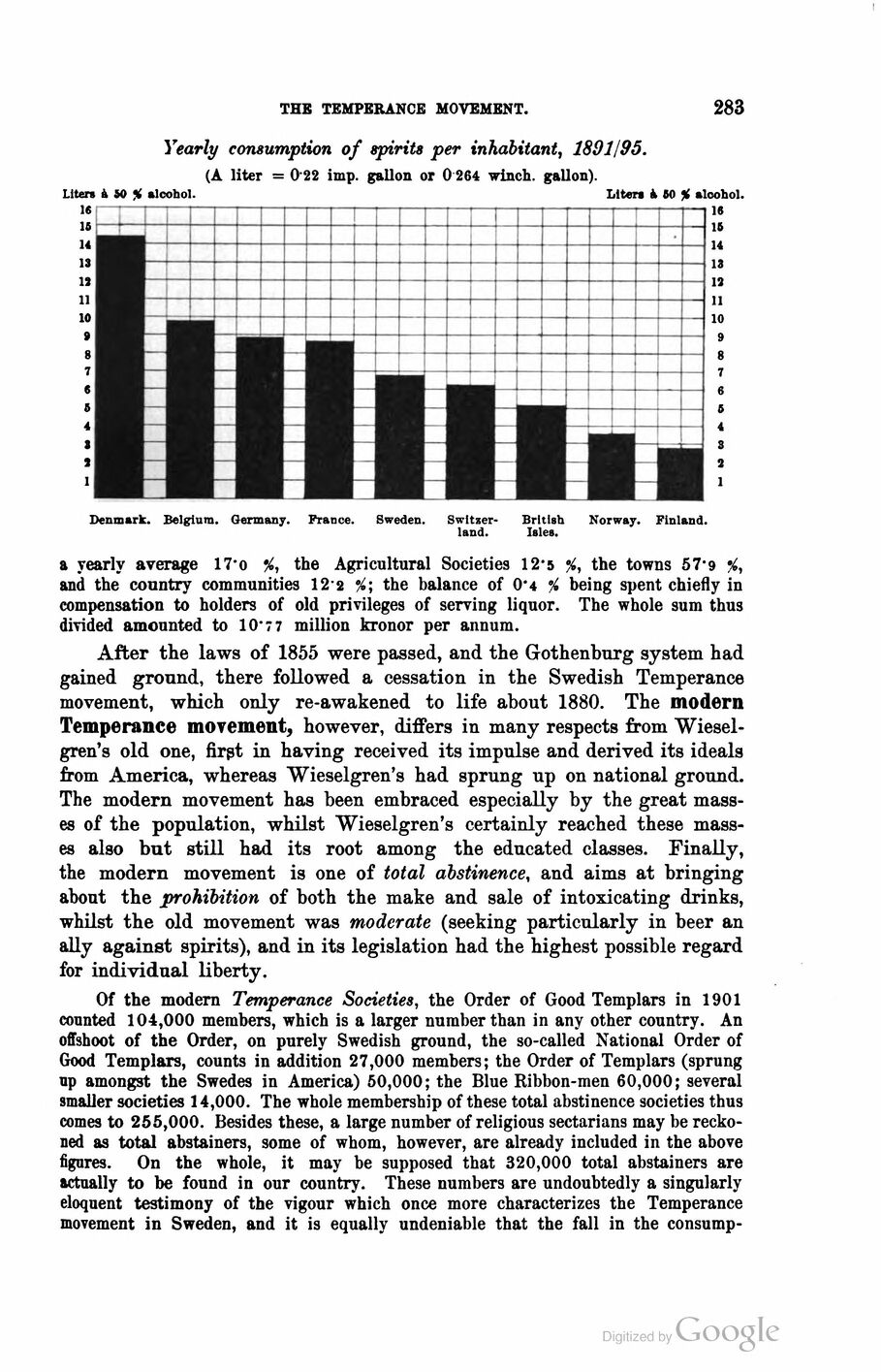
Full resolution (JPEG) - On this page / på denna sida - First part - III. Constitution and Administration - 5. Social Movements - The Temperance Movement, by K. Blomquist, Prison Gov., Kristianstad, and G. H. von Koch, Editor, Stockholm

<< prev. page << föreg. sida << >> nästa sida >> next page >>
Below is the raw OCR text
from the above scanned image.
Do you see an error? Proofread the page now!
Här nedan syns maskintolkade texten från faksimilbilden ovan.
Ser du något fel? Korrekturläs sidan nu!
This page has never been proofread. / Denna sida har aldrig korrekturlästs.
THE TEMPERANCE MOVEMENT.
283
Yearly consumption of spirits per inhabitant, 1891/95.
(A liter = 0’22 imp. gallon or 0 264 winch, gallon).
a yearly average 17"o %, the Agricultural Societies 12’s %, the towns 57’9 %,
and the country communities 12 2 %; the balance of 0’4 % being spent chiefly in
compensation to holders of old privileges of serving liquor. The whole sum thus
divided amounted to 10" 7 7 million kronor per annum.
After the laws of 1855 were passed, and the Gothenburg system had
gained ground, there followed a cessation in the Swedish Temperance
movement, which only re-awakened to life about 1880. The modern
Temperance movement, however, differs in many respects from
Wieselgren^ old one, firpt in having received its impulse and derived its ideals
from America, whereas "Wieselgrens had sprung up on national ground.
The modern movement has been embraced especially by the great
masses of the population, whilst Wieselgrens certainly reached these
masses also but still had its root among the educated classes. Finally,
the modern movement is one of total abstinence, and aims at bringing
about the prohibition of both the make and sale of intoxicating drinks,
whilst the old movement was moderate (seeking particularly in beer an
ally against spirits), and in its legislation had the highest possible regard
for individual liberty.
Of the modern Temperance Societies, the Order of Good Templars in 1901
counted 104,000 members, which is a larger number than in any other country. An
offshoot of the Order, on purely Swedish ground, the so-called National Order of
Good Templars, counts in addition 27,000 members; the Order of Templars (sprung
up amongst the Swedes in America) 50,000; the Blue Ribbon-men 60,000; several
smaller societies 14,000. The whole membership of these total abstinence societies thus
comes to 255,000. Besides these, a large number of religious sectarians may be
reckoned as total abstainers, some of whom, however, are already included in the above
figures. On the whole, it may be supposed that 320,000 total abstainers are
actually to be found in our country. These numbers are undoubtedly a singularly
eloquent testimony of the vigour which once more characterizes the Temperance
movement in Sweden, and it is equally undeniable that the fall in the consump-
<< prev. page << föreg. sida << >> nästa sida >> next page >>